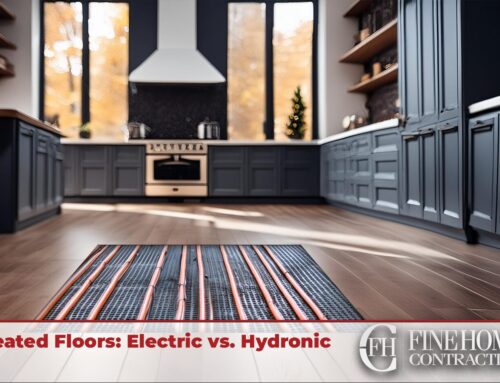As we or our loved ones age or develop disabilities, adapting our homes becomes essential to allow for safe, comfortable and convenient daily living. Disaster preparedness is also critical, as vulnerable populations need extra provisions to stay safe when emergencies occur. Fortunately, many home modifications can serve double duty – improving accessibility while also boosting disaster readiness.
Assess Your Unique Needs & Limitations
To determine appropriate home adaptations, have open conversations with elderly or disabled residents and caregivers to identify physical, medical and cognitive conditions requiring accommodation. Note difficulties with mobility, balance, vision, hearing, strength and other functions that may necessitate grab bars, railings, ramps and lighting improvements. Document required medical equipment, supplies and daily medications that need special provisions like backup power sources. Also factor in cognitive conditions like dementia that may require safety reminders or monitoring technology.
Create an Emergency Plan
With needs assessed, craft a detailed emergency plan tailored to the home.
Identify local resources like Meals on Wheels, paratransit, elder care agencies and neighbors that can provide assistance with transportation, food, medical needs and temporary shelter in an emergency. Make arrangements for accessible transportation to evacuation shelters or pre-determined family meeting places in case relocation becomes necessary during a disaster. And finally, choose nearby and out-of-town meeting locations to reunite if family members are separated, and share these locations with all involved parties.
Prepare the Home Environment
To improve safety and accessibility during home remodels and potential emergencies, adapt the home’s layout and features to the meet the unique needs of elderly and disabled residents. Install grab bars, railings, wheelchair ramps, adequate lighting and non-slip surfaces in key areas to prevent debilitating or dangerous falls. Ensure elderly residents can easily access the kitchen, bedrooms, bathroom and common areas. And lastly, invest in emergency backup power options like generators or solar panels to operate medical devices and mobility equipment in the event that electricity is lost.
- Fall Prevention – Remove any tripping hazards like area rugs, raise furniture that is too low to stand up from easily and keep walkways and hallways clear for those utilizing wheelchairs and mobility aids during construction.
- Accessible Navigation – Keep walkways and hallways clear for mobility aids during construction. Ensure easy access to essential rooms.
- Backup Utilities – Have emergency backup power options like generators or solar panels to operate medical devices and mobility equipment if the electricity goes out.
Stock Necessary Supplies
In addition to a well-conceived emergency plan, it is wise to proactively gather and maintain adequate stocks of supplies tailored for the unique needs of the household. Keep at least a 2 week supply of vital prescription medications that could be difficult to procure in an emergency situation. Also stock up on medical supplies, with backup batteries and power cords for critical medical devices like oxygen concentrators in supply. Have extra mobility aids like spare wheelchairs, walkers, canes and scooters in storage, plus extra tires and batteries. Invest in portable chargers, backup generators or small solar panels to keep assistive devices powered up in a power outage. These steps help provide peace of mind that vulnerable residents will have the supplies needed to maintain health, mobility and medical care during an emergency.
Utilize Technology
Lastly, incorporate tech-based solutions like medical alert systems, monitoring apps and sensors, and smart home automation to enhance safety, convenience and connectivity for vulnerable residents during home remodels or emergencies. Medical alert systems allow users to call for help 24/7 and quickly access emergency support services with the press of a button. Apps, wearable monitors and in-home sensors can unobtrusively track location, detect falls, receive alerts if a vulnerable resident wanders from home, and monitor vital signs from afar for family caregivers. Smart home automation features like automatic lighting, thermostats and remotely controlled locks offer control over the home environment and convenience, reducing the need to get up and down during construction. Technology options remove worry, provide monitoring and oversight for caregivers, and supply frequent check-ins to ensure all is well with loved ones.
- Medical Alert Systems – Medical alert systems allow users to call for help and access emergency support 24/7 if needed.
- Monitoring Apps and Sensors – Apps and sensors can track location, detect falls, receive alerts, and monitor vitals from afar.
- Smart Home Automation – Smart lights, locks, and thermostats offer control and convenience, especially for those with limited mobility.







